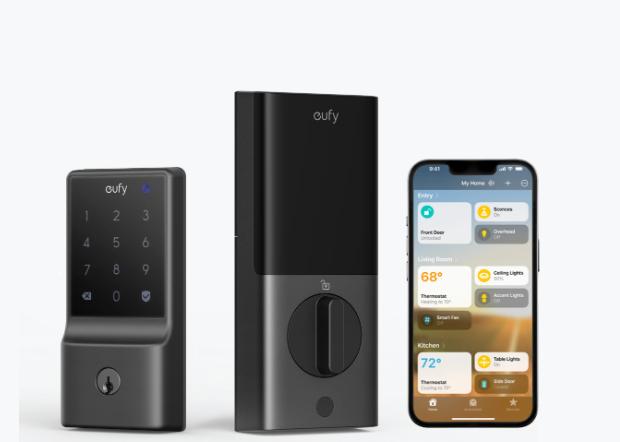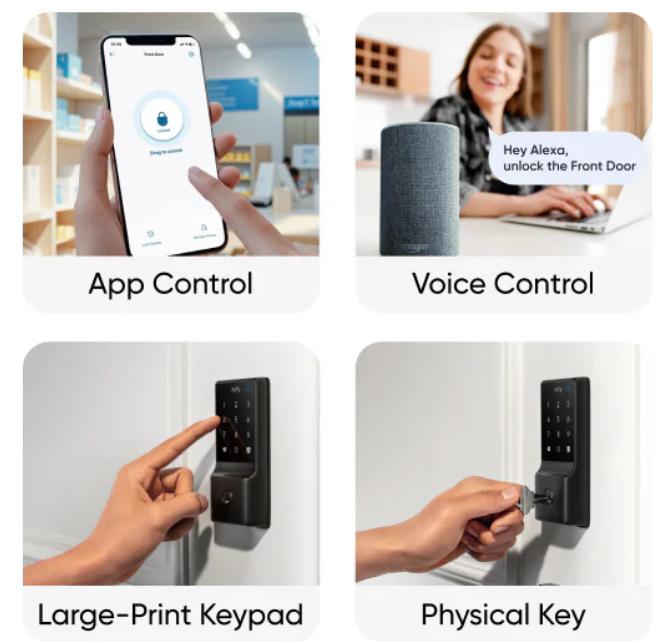Smart lock technology has continually transformed the way homes and businesses handle security. By 2025, these devices have become more advanced, with enhanced features and greater integration into daily life. Innovations in Artificial Intelligence (AI), biometric recognition, and connectivity have pushed the envelope, setting new standards for convenience and security. This blog aims to delve into the key trends and advancements in smart lock technology that you can expect to see in 2025.

How Smart Locks Have Changed Over the Years
From Mechanical Locks to Digital Access
Smart locks have come a long way from traditional mechanical locks. Initially, the shift from physical keys to digital access began with numerical keypads and RFID cards, which offered a higher level of convenience and security. This transition marked the first significant step toward integrating technology with home security, providing users with faster and more reliable access methods without the need for traditional keys.
The Rise of Bluetooth and Wi-Fi Smart Locks
The introduction of Bluetooth and Wi-Fi technology further revolutionized smart locks. These innovations enabled users to control their locks remotely, through smartphones and other internet-connected devices. Bluetooth and Wi-Fi locks offered real-time notifications, remote access, and enhanced security features, making it easier for users to monitor and manage their home security systems from virtually anywhere.
Key Smart Lock Innovations in 2025
AI-Integrated Access Systems
In 2025, AI-integrated access systems have become a staple in smart lock technology. These systems leverage machine learning algorithms to recognize patterns in user behavior, enhancing security measures and offering personalized access options. AI can detect and alert homeowners of unusual activity, potentially preventing unauthorized access and ensuring a higher level of safety.
Biometric Advancements: Fingerprint and Facial Recognition
Biometric advancements have taken smart lock security to a new level. Fingerprint and facial recognition technologies provide unparalleled accuracy and convenience. In 2025, these features are more sophisticated, allowing faster and more secure access. Enhanced biometric sensors ensure that only authorized individuals can gain entry, reducing the risk of break-ins and enhancing overall security.
Improved Connectivity and Ecosystem Integration
Seamless Integration with Smart Home Hubs
Smart locks in 2025 are designed to seamlessly integrate with smart home hubs. Users can control their locks through centralized systems such as Amazon Echo, Google Home, or Apple HomeKit. This integration facilitates automated routines, such as locking doors at night or when the house is empty, providing both convenience and peace of mind for users.
Real-Time Remote Access and Control via Apps
One of the most significant benefits of modern smart locks is real-time remote access and control through mobile apps. These apps allow homeowners to lock or unlock their doors from anywhere, receive real-time notifications of entry, and manage access permissions for multiple users. This feature is particularly useful for managing properties or granting temporary access to guests and service providers.
Enhanced Security Features in Modern Smart Locks
End-to-End Encryption and Tamper Alerts
Modern smart locks come with enhanced security features like end-to-end encryption and tamper alerts. End-to-end encryption ensures that communication between the lock and the user’s device is secure, preventing unauthorized access. Tamper alerts notify users immediately if someone attempts to physically alter or damage the lock, giving them the opportunity to take prompt action.
Multi-User Access and Activity Logs
Multi-user access and activity logs are other key features in 2025 smart locks. These locks can accommodate multiple users, each with their distinct access permissions. Activity logs track all entries and exits, providing detailed records of who accessed the property and when. This feature is invaluable for monitoring security and managing access in shared living spaces or small businesses.
User Experience and Convenience in 2025 Models
Keyless Entry and Voice Command Support
Keyless entry remains a cornerstone of smart lock convenience. Models in 2025 feature advanced keyless solutions, such as voice command support through virtual assistants. Users can lock and unlock doors with simple voice commands, making the process even more seamless and hands-free. This enhancement adds another layer of ease to daily routines, especially when carrying items or in an emergency.
Battery Efficiency and Emergency Access Solutions
Improvements in battery efficiency ensure that smart locks in 2025 are more reliable and longer-lasting. Emergency access solutions, such as backup power options or manual override capabilities, have also been refined. These features guarantee that users are never locked out due to a dead battery or technical malfunction, maintaining accessibility and security at all times.

What to Expect in the Future of Smart Locking
As we look beyond 2025, the future of smart locking promises even more exciting advancements. Expect further integration with other smart home devices, creating a unified and highly automated living environment. Innovations in AI and biometrics will continue to enhance security and personalization. Additionally, sustainable and eco-friendly designs will become a priority, ensuring that smart locks not only protect our homes but also contribute to a healthier planet.
Conclusion
The advancements in smart door locks technology by 2025 have significantly elevated home security and user convenience. From AI-integrated access systems to biometric recognition and enhanced connectivity, today’s smart locks offer a glimpse into the future of secure living. As technology continues to evolve, we can expect even greater integration, security features, and sustainability in smart locking solutions, making our homes safer and more intelligent than ever before.
